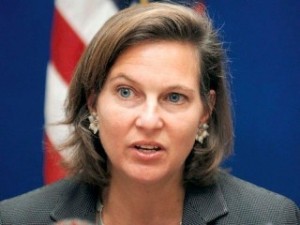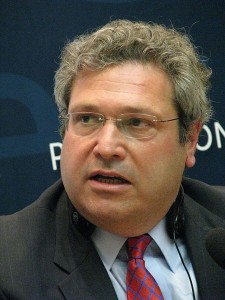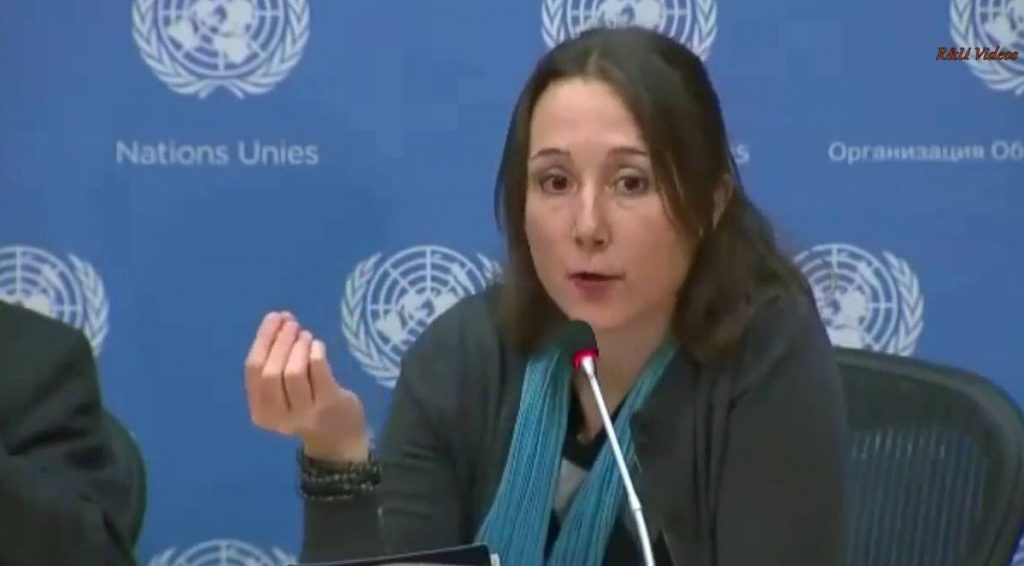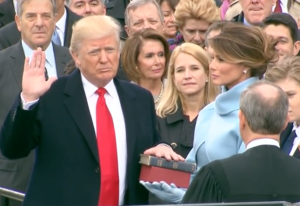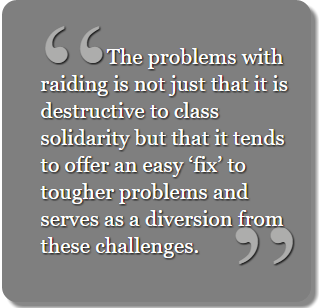Author’s Note
At this juncture in our history, information emanating from Wikileaks constitute an invaluable source of information regarding the workings of US intelligence and the so-called “Deep State”.
Public opinion has acknowledged the central role of Wikileaks in the battle against mainstream media disinformation (NYT, WaPo) and the insidious role of US intelligence regarding the “Russia hacking” allegations.
While Wikileaks is now categorized – alongside more than 200 alternative-independent media- as “fake news”, the fundamental question is Who is behind Wikileaks? Who is protecting wikileaks? What interests are being served?
This article originally published in December 2010 examines not only the origins of Wikileaks, it also reveals its contradictory relationship to the Western economic elites and the corporate media including the New York Times.
Michel Chossudovsky, Global Research, March 16, 2017
* * *
“World bankers, by pulling a few simple levers that control the flow of money, can make or break entire economies. By controlling press releases of economic strategies that shape national trends, the power elite are able to not only tighten their stranglehold on this nation’s economic structure, but can extend that control world wide. Those possessing such power would logically want to remain in the background, invisible to the average citizen.” (Aldous Huxley)
Wikleaks is upheld as a breakthrough in the battle against media disinformation and the lies of the US government.
Unquestionably, the released documents constitute an important and valuable data bank. The documents have been used by critical researchers since the outset of the Wikileaks project. Wikileaks earlier revelations have focussed on US war crimes in Afghanistan (July 2010) as well as issues pertaining to civil liberties and the “militarization of the Homeland” (see Tom Burghardt, Militarizing the “Homeland” in Response to the Economic and Political Crisis, Global Research, October 11, 2008)
In October 2010, WikiLeaks was reported to have released some 400,000 classified Iraq war documents, covering events from 2004 to 2009 (Tom Burghardt, The WikiLeaks Release: U.S. Complicity and Cover-Up of Iraq Torture Exposed, Global Research, October 24, 2010). These revelations contained in the Wikileaks Iraq War Logs provide “further evidence of the Pentagon’s role in the systematic torture of Iraqi citizens by the U.S.-installed post-Saddam regime.” (Ibid)
Progressive organizations have praised the Wikileaks endeavor. Our own website Global Research has provided extensive coverage of the Wikileaks project.
The leaks are heralded as an immeasurable victory against corporate media censorship.
But there is more than meets the eye.
Even prior to the launching of the project, the mainstream media had contacted Wikileaks.
There are also reports from published email exchanges (unconfirmed) that Wikileaks had, at the outset of the project in January 2007, contacted and sought the advice of Freedom House. This included an invitation to Freedom House (FH) to participate in the Wikileaks advisory board:
“We are looking for one or two initial advisory board member from FH who may advise on the following:
1. the needs of FH as consumer of leaks exposing business and political corruption
2. the needs for sources of leaks as experienced by FH
3. FH recommendations for other advisory board members
4. general advice on funding, coallition [sic] building and decentralised operations and political framing”
(Wikileaks Leak email exchanges, January 2007).
There is no evidence of FH followup support to the Wikileaks project. Freedom House is a Washington based “watchdog organization that supports the expansion of freedom around the world”. It is chaired by William H. Taft IV who was legal adviser to the State Department under G. W. Bush and Deputy Secretary of Defense under the Reagan administration.
Wikileaks had also entered into negotiations with several corporate foundations with a view to securing funding. (Wikileaks Leak email exchanges, January 2007):
The linchpin of WikiLeaks’s financial network is Germany’s Wau Holland Foundation. … “We’re registered as a library in Australia, we’re registered as a foundation in France, we’re registered as a newspaper in Sweden,” Mr. Assange said. WikiLeaks has two tax-exempt charitable organizations in the U.S., known as 501C3s, that “act as a front” for the website, he said. He declined to give their names, saying they could “lose some of their grant money because of political sensitivities.”
Mr. Assange said WikiLeaks gets about half its money from modest donations processed by its website, and the other half from “personal contacts,” including “people with some millions who approach us….” (WikiLeaks Keeps Funding Secret, WSJ.com, August 23, 2010)
Acquiring covert funding from intelligence agencies was, according to the email exchanges, also contemplated. (See Wikileaks Leak email exchanges, January 2007)
At the outset in early 2007, Wikileaks acknowledged that the project had been
“founded by Chinese dissidents, mathematicians and startup company technologists, from the US, Taiwan, Europe, Australia and South Africa…. [Its advisory board] includes representatives from expat Russian and Tibetan refugee communities, reporters, a former US intelligence analyst and cryptographers.” (Wikileaks Leak email exchanges, January 2007).
Wikileaks formulated its mandate on its website as follows:
“[Wikileaks will be] an uncensorable version of Wikipedia for untraceable mass document leaking and analysis. Our primary interests are oppressive regimes in Asia, the former Soviet bloc, Sub-Saharan Africa and the Middle East, but we also expect to be of assistance to those in the west who wish to reveal unethical behavior in their own governments and corporations,” CBC News – Website wants to take whistleblowing online, January 11, 2007, emphasis added).
This mandate was confirmed by Julian Assange in a June 2010 interview in The New Yorker:
“Our primary targets are those highly oppressive regimes in China, Russia and Central Eurasia, but we also expect to be of assistance to those in the West who wish to reveal illegal or immoral behavior in their own governments and corporations. (quoted in WikiLeaks and Julian Paul Assange : The New Yorker, June 7, 2010, emphasis added)
Assange also intimated that “exposing secrets” “could potentially bring down many administrations that rely on concealing reality—including the US administration.” (Ibid)
From the outset, Wikileaks’ geopolitical focus on “oppressive regimes” in Eurasia and the Middle East was “appealing” to America’s elites, i.e. it seemingly matched stated US foreign policy objectives. Moreover, the composition of the Wikileaks team (which included Chinese dissidents), not to mention the methodology of “exposing secrets” of foreign governments, were in tune with the practices of US covert operations geared towards triggering “regime change” and fostering “color revolutions” in different parts of the World.
The Role of the Corporate Media: The Central Role of the New York Times
Wikileaks is not a typical alternative media initiative. The New York Times, the Guardian and Der Spiegel are directly involved in the editing and selection of leaked documents. The London Economist has also played an important role.
While the project and its editor Julian Assange reveal a commitment and concern for truth in media, the recent Wikileaks releases of embassy cables have been carefully “redacted” by the mainstream media in liaison with the US government. (See Interview with David E. Sanger, Fresh Air, PBS, December 8, 2010)
This collaboration between Wikileaks and selected mainstream media is not fortuitous; it was part of an agreement between several major US and European newspapers and Wikileaks’ editor Julian Assange.
The important question is who controls and oversees the selection, distribution and editing of released documents to the broader public?
What US foreign policy objectives are being served through this redacting process?
Is Wikileaks part of an awakening of public opinion, of a battle against the lies and fabrications which appear daily in the print media and on network TV?
If so, how can this battle against media disinformation be waged with the participation and collaboration of the corporate architects of media disinformation?
Wikileaks has enlisted the architects of media disinformation to fight media disinformation: An incongruous and self-defeating procedure.
America’s corporate media and more specifically The New York Times are an integral part of the economic establishment, with links to Wall Street, the Washington think tanks and the Council on Foreign Relations (CFR).
Moreover, the US corporate media has developed a longstanding relationship to the US intelligence apparatus, going back to “Operation Mocking Bird”, an initiative of the CIA’s Office of Special Projects (OSP), established in the early 1950s.
Even before the Wikileaks project got off the ground, the mainstream media was implicated. A role was defined and agreed upon for the corporate media not only in the release, but also in the selection and editing of the leaks. In a bitter irony, the “professional media”, to use Julian Assange’s words in an interview with The Economist, have been partners in the Wikileaks project from the outset.
Moreover, key journalists with links to the US foreign policy-national security intelligence establishment have worked closely with Wikileaks, in the distribution and dissemination of the leaked documents.
In a bitter irony, Wikileaks partner The New York Times, which has consistently promoted media disinformation is now being accused of conspiracy. For what? For revealing the truth? Or for manipulating the truth? In the words of Senator Joseph L. Lieberman:
“I certainly believe that WikiLleaks has violated the Espionage Act, but then what about the news organizations — including The Times — that accepted it and distributed it?” Mr. Lieberman said, adding: “To me, The New York Times has committed at least an act of bad citizenship, and whether they have committed a crime, I think that bears a very intensive inquiry by the Justice Department.” (WikiLeaks Prosecution Studied by Justice Department – NYTimes.com, December 7, 2010)
This “redacting” role of The New York Times is candidly acknowledged by David E Sanger, Chief Washington correspondent of the NYT:
“[W]e went through [the cables] so carefully to try to redact material that we thought could be damaging to individuals or undercut ongoing operations. And we even took the very unusual step of showing the 100 cables or so that we were writing from to the U.S. government and asking them if they had additional redactions to suggest.” (See PBS Interview; The Redacting and Selection of Wikileaks documents by the Corporate Media, PBS interview on “Fresh Air” with Terry Gross: December 8, 2010, emphasis added).
Yet Sanger also says later in the interview:
“It is the responsibility of American journalism, back to the founding of this country, to get out and try to grapple with the hardest issues of the day and to do it independently of the government.” (ibid)
“Do it independently of the government” while at the same time “asking them [the US government] if they had additional redactions to suggest”?
David E. Sanger cannot be described as a model independent journalist. He is member of the Council on Foreign Relations (CFR) and the Aspen Institute’s Strategy Group which regroups the likes of Madeleine K. Albright, Condoleeza Rice, former Defense Secretary William Perry, former CIA head John Deutch, the president of the World Bank, Robert. B. Zoellick and Philip Zelikow, former executive director of the 9/11 Commission, among other prominent establishment figures. (See also F. William Engdahl, Wikileaks: A Big Dangerous US Government Con Job, Global Research, December 10, 2010).
It is worth noting that several American journalists, members of the Council on Foreign Relations have interviewed Wikileaks, including Time Magazine’s Richard Stengel (November 30, 2010) and The New Yorker’s Raffi Khatchadurian. (WikiLeaks and Julian Paul Assange : The New Yorker, June 11, 2007)
Historically, The New York Times has served the interests of the Rockefeller family in the context of a longstanding relationship. The current New York Times chairman Arthur Sulzberger Jr. is a member of the Council on Foreign Relations, son of Arthur Ochs Sulzberger and grandson of Arthur Hays Sulzberger who served as a Trustee for the Rockefeller Foundation. Ethan Bronner, deputy foreign editor of The New York Times as well as Thomas Friedman among others are also members of the Council on Foreign Relations (CFR). (Membership Roster – Council on Foreign Relations)
In turn, the Rockefellers have an important stake as shareholders of several US corporate media.
The Embassy and State Department Cables
It should come as no surprise that David E. Sanger and his colleagues at the NYT centered their attention on a highly “selective” dissemination of the Wikileaks cables, focussing on areas which would support US foreign policy interests: Iran’s nuclear program, North Korea, Saudi Arabia and Pakistan’s support of Al Qaeda, China’s relations with North Korea, etc. These releases were then used as source material in NYT articles and commentary.
The Embassy and State Department cables released by Wikileaks were redacted and filtered. They were used for propaganda purposes. They do not constitute a complete and continuous set of memoranda.
From a selected list of cables, the leaks are being used to justify a foreign policy agenda. A case in point is Iran’s alleged nuclear weapons program, which is the object of numerous State Department memos, as well as Saudi Arabia’s support of Islamic terrorism.
Iran’s Nuclear Program
The leaked cables are used to feed the disinformation campaign concerning Iran’s Weapons of Mass Destruction. While the leaked cables are heralded as “evidence” that Iran constitutes a threat, the lies and fabrications of the corporate media concerning Iran’s alleged nuclear weapons program are not mentioned, nor is there any mention of them in the leaked cables.
The leaks, once they are funnelled into the corporate news chain, edited and redacted by the New York Times, indelibly serve the broader interests of US foreign policy, including US-NATO-Israel war preparations directed against Iran.
With regard to “leaked intelligence” and the coverage of Iran’s alleged nuclear weapons program, David E. Sanger has played a crucial role. In November 2005, The New York Times published a report co-authored by David E. Sanger and William J. Broad entitled “Relying on Computer, U.S. Seeks to Prove Iran’s Nuclear Aims”.
The article refers to mysterious documents on a stolen Iranian laptop computer which included “a series of drawings of a missile re-entry vehicle” which allegedly could accommodate an Iranian produced nuclear weapon:
“In mid-July, senior American intelligence officials called the leaders of the international atomic inspection agency to the top of a skyscraper overlooking the Danube in Vienna and unveiled the contents of what they said was a stolen Iranian laptop computer.
The Americans flashed on a screen and spread over a conference table selections from more than a thousand pages of Iranian computer simulations and accounts of experiments, saying they showed a long effort to design a nuclear warhead, according to a half-dozen European and American participants in the meeting.
The documents, the Americans acknowledged from the start, do not prove that Iran has an atomic bomb. They presented them as the strongest evidence yet that, despite Iran’s insistence that its nuclear program is peaceful, the country is trying to develop a compact warhead to fit atop its Shahab missile, which can reach Israel and other countries in the Middle East.”(William J. Broad and David E. Sanger Relying on Computer, U.S. Seeks to Prove Iran’s Nuclear Aims – New York Times, November 13, 2005, emphasis added)
These “secret documents” were subsequently submitted by the US State Department to the International Atomic Energy Agency IAEA, with a view to demonstrating that Iran was developing a nuclear weapons program. They were also used as a pretext to enforce the economic sanctions regime directed against Iran, adopted by the UN Security Council.
While their authenticity has been questioned, a recent article by investigative reporter Gareth Porter confirms unequivocally that the mysterious laptop documents are fake. (See Gareth Porter, Exclusive Report: Evidence of Iran Nuclear Weapons Program May Be Fraudulent, Global Research, November 18, 2010).
The drawings contained in the documents leaked by William J. Broad and David E. Sanger do not pertain to the Shahab missile but to an obsolete North Korean missile system which was decommissioned by Iran in the mid-1990s. The drawings presented by US State Department officials pertained to the “Wrong Missile Warhead”:
In July 2005, … Robert Joseph, US undersecretary of state for arms control and international security, made a formal presentation on the purported Iranian nuclear weapons program documents to the agency’s leading officials in Vienna. Joseph flashed excerpts from the documents on the screen, giving special attention to the series of technical drawings or “schematics” showing 18 different ways of fitting an unidentified payload into the re-entry vehicle or “warhead” of Iran’s medium-range ballistic missile, the Shahab-3. When IAEA analysts were allowed to study the documents, however, they discovered that those schematics were based on a re-entry vehicle that the analysts knew had already been abandoned by the Iranian military in favor of a new, improved design. The warhead shown in the schematics had the familiar “dunce cap” shape of the original North Korean No Dong missile, which Iran had acquired in the mid-1990s. … The laptop documents had depicted the wrong re-entry vehicle being redesigned. … (Gareth Porter, op cit, emphasis added)
David E, Sanger, who worked diligently with Wikileaks under the banner of truth and transparency was also instrumental in the New York Times “leak” of what Gareth Porter describes as fake intelligence. (Ibid)
While this issue of fake intelligence received virtually no media coverage, it invalidates outright Washington’s assertions regarding Iran’s alleged nuclear weapons. It also questions the legitimacy of the UN Security Council Sancions regime directed against Iran.
Moreover, in a bitter irony, the selective redacting of the Wikileaks embassy cables by the NYT has usefully served not only to dismiss the central issue of fake intelligence but also to reinforce, through media disinformation, Washington’s claim that Iran is developing nuclear weapons. A case in point is a November 2010 article co-authored by David E. Sanger, which quotes the Wikileaks cables as a source:
“Iran obtained 19 of the missiles from North Korea, according to a [Wikileaks] cable dated Feb. 24 of this year…. (WikiLeaks Archive — Iran Armed by North Korea – NYTimes.com, November 28, 2010).
These missiles are said to have the “capacity to strike at capitals in Western Europe or easily reach Moscow, and American officials warned that their advanced propulsion could speed Iran’s development of intercontinental ballistic missiles.” (Ibid, emphasis added).
Wikileaks, Iran and the Arab World
The released wikileaks cables have also being used to create divisions between Iran on the one hand and Saudi Arabia and the Gulf States on the other:
“After WikiLeaks claimed that certain Arab states are concerned about Iran’s nuclear program and have urged the U.S. to take [military] action to contain Iran, U.S. Secretary of State Hillary Clinton took advantage of the issue and said that the released cables showed U.S. concerns regarding Iran’s nuclear program are shared by the international community.” Tehran Times : WikiLeaks promoting Iranophobia, December 5, 2010)
The Western media has jumped on this opportunity and has quoted the State Department memoranda released by Wikleaks with a view to upholding Iran as a threat to global security as well as fostering divisions between Iran and the Arab world.
“The Global War on Terrorism”
The leaks quoted by the Western media reveal the support of the Gulf States and Saudi Arabia to several Islamic terrorist organizations, a fact which is known and amply documented.
What the reports fail to mention, however, which is crucial in an understanding of the “Global War on Terrorism”, is that US intelligence historically has channelled its support to terrorist organizations via Pakistan and Saudi Arabia. (See Michel Chossudovsky, America’s “War on Terrorism”, Global Research, Montreal, 2005). These are US sponsored covert intelligence operations using Saudi and Pakistani intelligence as intermediaries.
In this regard, the use of the Wikleaks documents by the media tends to sustain the illusion that the CIA has nothing to do with the terror network and that Saudi Arabia and the Gulf states are “providing the lion’s share of funding” to Al Qaeda, the Taliban, Lashkar-e-Taiba, among others, when in fact this financing is undertaken in liaison and consultation with their US intelligence counterparts:
“The information came to light in the latest round of documents released Sunday by Wikileaks. In their communiques to the State Department, U.S. embassies in Saudi Arabia and the Gulf states describe a situation in which wealthy private donors, often openly, lavishly support the same groups against whom Saudi Arabia claims to be fighting.” ( Wikileaks: Saudis, Gulf States Big Funders of Terror Groups – Defense/Middle East – Israel News – Israel National News)
Similarly, with regard to Pakistan:
The cables, obtained by WikiLeaks and made available to a number of news organizations, make it clear that underneath public reassurances lie deep clashes [between the U.S. and Pakistan] over strategic goals on issues like Pakistan’s support for the Afghan Taliban and tolerance of Al Qaeda,…” (Wary Dance With Pakistan in Nuclear World, The New York Times December 1, 2010)
Reports of this nature serve to provide legitimacy to US drone attacks against alleged terrorist targets inside Pakistan.
The corporate media’s use and interpretation of the Wikileaks cables serves to uphold two related myths:
1) Iran has nuclear weapons program and constitutes a threat to global security.
2) Saudi Arabia and Pakistan are state sponsors of Al Qaeda. They are financing Islamic terrorist organizations which are intent upon attacking the US and its NATO allies.
The CIA and the Corporate Media
The CIA’s relationship to the US media is amply documented. The New York Times continues to entertain a close relationship not only with US intelligence, but also with the Pentagon and more recently with the Department of Homeland Security.
“Operation Mocking Bird” was an initiative of the CIA’s Office of Special Projects (OSP), established in the early 1950s. Its objective was to exert influence on both the US as well as the foreign media. From the 1950s, members of the US media were routinely enlisted by the CIA.
The inner workings of the CIA’s relationship to the US media are described in Carl Bernstein’s 1977 article in Rolling Stone entitled The CIA and the Media:
“[M]ore than 400 American journalists who [had] secretly carried out assignments for the Central Intelligence Agency, according to documents on file at CIA headquarters. [1950-1977]Some of these journalists’ relationships with the Agency were tacit; some were explicit. … Reporters shared their notebooks with the CIA. Editors shared their staffs. Some of the journalists were Pulitzer Prize winners,… Most were less exalted: foreign correspondents who found that their association with the Agency helped their work….;
Among the executives who lent their cooperation to the Agency were Williarn Paley of the Columbia Broadcasting System, Henry Luce of Tirne Inc., Arthur Hays Sulzberger of the New York Times, Barry Bingham Sr. of the LouisviIle Courier‑Journal, and James Copley of the Copley News Service. Other organizations which cooperated with the CIA include the American Broadcasting Company, the National Broadcasting Company, the Associated Press, United Press International, Reuters, Hearst Newspapers, Scripps‑Howard, Newsweek magazine, the Mutual Broadcasting System, the Miami Herald and the old Saturday Evening Post and New York Herald‑Tribune. (The CIA and the Media by Carl Bernstein)
Bernstein suggests, in this regard, that
“the CIA’s use of the American news media has been much more extensive than Agency officials have acknowledged publicly or in closed sessions with members of Congress” (Ibid).
In recent years, the CIA’s relationship to the media has become increasingly complex and sophisticated. We are dealing with a mammoth propaganda network involving a number of agencies of government.
Media disinformation has become institutionalized. The lies and fabrications have become increasingly blatant when compared to the 1970s. The US media has become the mouthpiece of US foreign policy. Disinformation is routinely “planted” by CIA operatives in the newsroom of major dailies, magazines and TV channels:
“A relatively few well-connected correspondents provide the scoops, that get the coverage in the relatively few mainstream news sources, where the parameters of debate are set and the “official reality” is consecrated for the bottom feeders in the news chain.”(Chaim Kupferberg, The Propaganda Preparation of 9/11, Global Research, September 19, 2002).
Since 2001, the US media has assumed a new role in sustaining the “Global War on Terrorism” (GWOT) and camouflaging US sponsored war crimes. In the wake of 9/11, Defense Secretary Donald Rumsfeld created the Office of Strategic Influence (OSI), or “Office of Disinformation” as it was labeled by its critics:
“The Department of Defense said they needed to do this, and they were going to actually plant stories that were false in foreign countries — as an effort to influence public opinion across the world.'” (Interview with Steve Adubato, Fox News, 26 December 2002, see also Michel Chossudovsky, War Propaganda, Global Research, January 3, 2003).
Today’s corporate media is an instrument of war propaganda, which begs the question: why would the NYT all of a sudden promote transparency and truth in media, by assisting Wikileaks in “spreading the word”; and that people around the World would not pause for one moment and question the basis of this incongruous relationship.
On the surface, nothing proves that Wikileaks is a CIA covert operation. However, given the corporate media’s cohesive and structured relationship to US intelligence, not to mention the links of individual journalists to the military-national security establishment, the issue of a CIA sponsored PsyOp must necessarily be addressed.
Wikileaks Social and Corporate Entourage
Wikileaks and The Economist have also entered into what seems to be a contradictory relationship. Wikileaks founder and editor Julian Assange was granted in 2008 The Economist’s New Media Award.
The Economist has a close relationship to Britain’s financial elites. It is an establishment news outlet, which has, on balance, supported Britain’s involvement in the Iraq war. The Economist’s Editor-in-Chief, John Micklethwait was a participant in the June 2010 Bilderberg conference.
The Economist also bears the stamp of the Rothschild family. Sir Evelyn Robert Adrian de Rothschild was chairman of The Economist from 1972 to 1989. His wife Lynn Forester de Rothschild currently sits on The Economist’s board. The Rothschild family also has a sizeable shareholder interest in The Economist. Former Editor of The Economist (1974-86), Andrew Stephen Bower Knight is currently Chairman of the J. Rothschild Capital Management Fund. He is also reported to have been member of the Steering Group (1986) of the Bilderberg.
The Role of the Frontline Club
In 2010, the London based Frontline Club served as de facto U.K “headquarters” for Wikileaks. The Frontline Club is an initiative of Henry Vaughan Lockhart Smith, a former British Grenadier Guards captain. According to NATO, Vaughan Smith became an “independant video journalist […] who always hated war, but remained […] soldier-friendly”. (Across the Wire, New media: Weapons of mass communication, NATO Review, February 2008)
Upon his release from bail, Julian Assange was provided refuge at Vaughan Smith’s Ellingham Manor in Norfolk.
The Frontline Club is an establishment media outfit. Vaughan Smith writes for the NATO Review. (See NATO Web TV Channel and NATO Nations: Accurate, Reliable and Convenient). His relationship to NATO goes back to 1998 when he worked as a video journalist in Kosovo. In 2010, he was “embedded with a platoon from the British Grenadier Guards” during Operation Moshtarak in Afghanistan’s Helmand Province. (PBS NewsHour, February 19, 2010). According to the New York Times, The Frontline Club “has received financing for its events from the Open Society Institute”. (In London, a Haven and a Forum for War Reporters – New York Times, 28 August 2006)
The broader question is why would Julian Assange receive the support from Britain’s foremost establishment news outfits which have consistently been involved in media disinformation?
Are we not dealing with a case of “manufactured dissent”, whereby the process of supporting and rewarding Wikileaks for its endeavors, becomes a means of controlling and manipulating the Wikileaks project, while at the same time embedding it into the mainstream media.
It is also worth mentioning another important link. Julian Assange’s lawyer Mark Stephens of Finers Stephens Innocent (FSI), a major London elite law firm, happens to be the legal adviser to the Rothschild Waddesdon Trust. While this in itself does prove anything, it should nonetheless be examined in the broader context of Wikileaks’ social and corporate entourage: the NYT, the CFR, The Economist, Time Magazine, Forbes, Finers Stephens Innocent (FSI), Vaughan Smith and the Frontline Club, etc.
Manufacturing Dissent
Wikileaks has the essential features of a process of “manufactured dissent”. It seeks to expose government lies. It has released important information on US war crimes. But once the project becomes embedded in the mould of mainstream journalism, it is used as an instrument of media disinformation:
“It is in the interest of the corporate elites to accept dissent and protest as a feature of the system inasmuch as they do not threaten the established social order. The purpose is not to repress dissent, but, on the contrary, to shape and mould the protest movement, to set the outer limits of dissent. To maintain their legitimacy, the economic elites favor limited and controlled forms of opposition… To be effective, however, the process of “manufacturing dissent” must be carefully regulated and monitored by those who are the object of the protest movement ” (See Michel Chossudovsky, “Manufacturing Dissent”: the Anti-globalization Movement is Funded by the Corporate Elites, September 2010)
What this examination of the Wikileaks project also suggests is that the mechanics of New World Order propaganda, particularly with regard to its military agenda, has become increasingly sophisticated.
It no longer relies on the outright suppression of the facts regarding US-NATO war crimes. Nor does it require that the reputation of government officials at the highest levels, including the Secretary of State, be protected. New World Order politicians are in a sense “disposable”. They can be replaced. What must be protected and sustained are the interests of the economic elites, which control the political apparatus from behind the scenes.
In the case of Wikileaks, the facts are contained in a data bank; many of those facts, particularly those pertaining to foreign governments serve US foreign policy interests. Other facts tend, on the other hand to discredit the US administration. With regard to financial information, the release of data pertaining to a particular bank instigated via Wikileaks by a rival financial institution, could potentially be used to trigger the collapse or bankrutpcy of the targeted financial institution.
All the Wiki-facts are selectively redacted, they are then “analyzed” and interpreted by a media which serves the economic elites.
While the numerous pieces of information contained in the Wikileaks data bank are accessible, the broader public will not normally take the trouble to consult and scan through the Wikileaks data bank. The public will read the redacted selections and interpretations presented in major news outlets.
A partial and biased picture is presented. The redacted version is accepted by public opinion because it is based on what is heralded as a “reliable source”, when in fact what is presented in the pages of major newspapers and on network TV is a carefully crafted and convoluted distortion of the truth.
Limited forms of critical debate and “transparency” are tolerated while also enforcing broad public acceptance of the basic premises of US foreign policy, including its “Global War on Terrorism”. With regard to a large segment of the US antiwar movement, this strategy seems to have succeeded: “We are against war but we support the ‘war on terrorism'”.
What this means is that truth in media can only be reached by dismantling the propaganda apparatus, –i.e. breaking the legitimacy of the corporate media which sustains the broad interests of the economic elites as well America’s global military design.
In turn, we must ensure that the campaign against Wikileaks in the U.S., using the 1917 Espionage Act, will not be utilized as a means to wage a campaign to control the internet. In this regard, we should also stand firm in preventing the prosecution of Julian Assange in the US.


